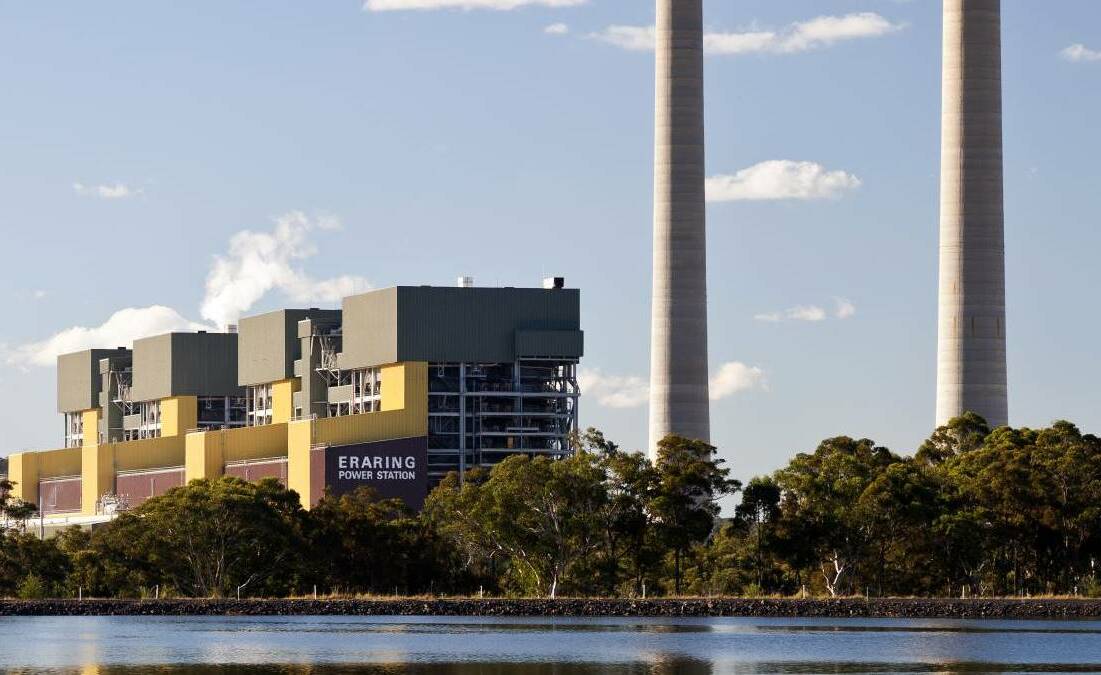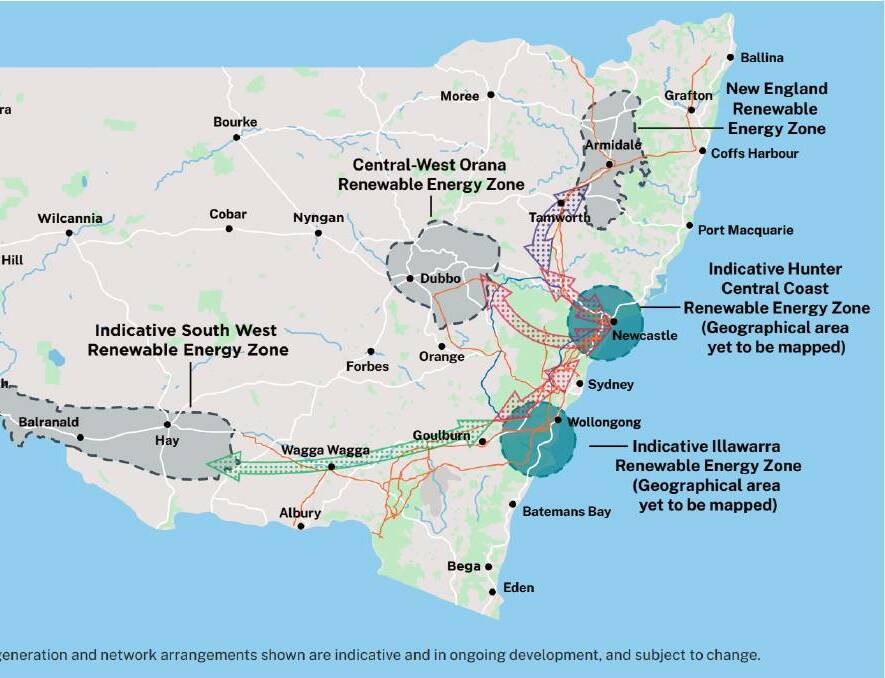
The State Government has announced a check-up of the state's energy policies to identify if additional measures are required to deliver cheap and reliable electricity.
It follows revelations that plans to transform the state's energy system and replace coal fired power were proving to be more costly and would take longer than initially thought.
The two renewable energy zones that account for the bulk of the new generation capacity will be delayed by up to two years.
The central west Orana zone, covering almost 21,000 square kilometres with a network capacity of 4.5 gigawatts for new wind and solar projects at a cost of $3.2 billion, will not hit its "energisation date" until 2027-28, compared with an initial 2025 target.

The New England zone, covering almost 15,500sq/km with a network capacity of 2.4 gigawatts and at a cost $4.2 billion, will now start in 2029 - two years behind the initial 2027 goal.
The $430million Hunter-Central Coast Renewable Energy Zone remains on track to come online in 2027.
Energy and public policy specialist Cameron O'Reilly has been appointed to conduct the check-up of the state's energy policies.
It will ensure that NSW can manage any residual risks to reliability and price in the short-term, should the Eraring Power Station close in August 2025 and considers opportunities to improve community engagement, workforce readiness and supply chains.
Since the release of the NSW Electricity Infrastructure Roadmap in 2020 global competition for investment has intensified, supply chain constraints and skills shortages have become more acute, and some regulatory and planning issues have become apparent.
"Mr O'Reilly will stress test the policies in place to ensure we have the right plans in place to deliver an orderly energy transition as quickly as possible to ensure reliable, affordable and clean electricity for NSW households and businesses," NSW Energy Minister Penny Sharpe said.

"I am committed to getting on with the task of delivering the Electricity Infrastructure Roadmap. This check-up will help us identify what else we need to do to remove barriers to delivery and accelerate getting infrastructure into the ground."
The state's five Renewable Energy Zones are critical to transition NSW from fossil fuels to renewable energy, minimising the amount of new poles, wires and transmission lines needed from renewable infrastructure.
Ms Sharpe said the original time frames for the zones didn't include the need to consult with local communities and she wanted to be up-front about the realistic costs, time frames and challenges.
Four out of five coal power stations in NSW are scheduled to retire over the next 10 years, with Eraring now to retire seven years early in 2025.
Ms Sharpe said there was no time to waste in building sufficient new generation capacity and storage but stressed there would be no risk of power outages.
"We are not going to allow the lights to go off," she said adding that coal-fired power stations could continue to operate if needed.
The government plans to reform the state's energy systems with a clean energy target of 50 per cent renewable energy by 2030 and as close as possible to 100 per cent by 2050.
To see more stories and read today's paper download the Newcastle Herald news app here.







